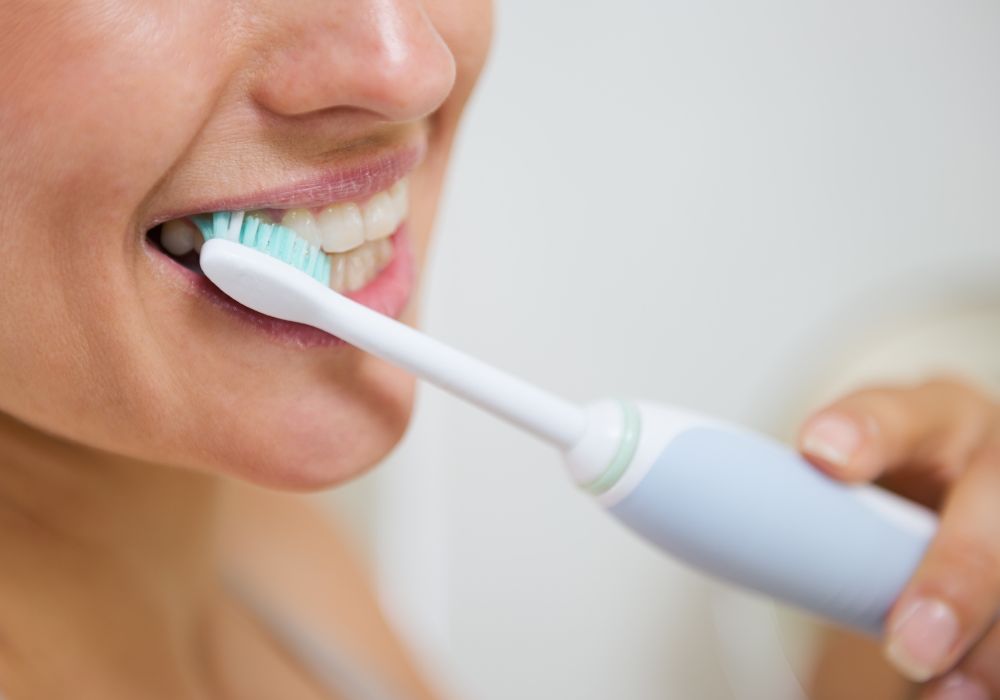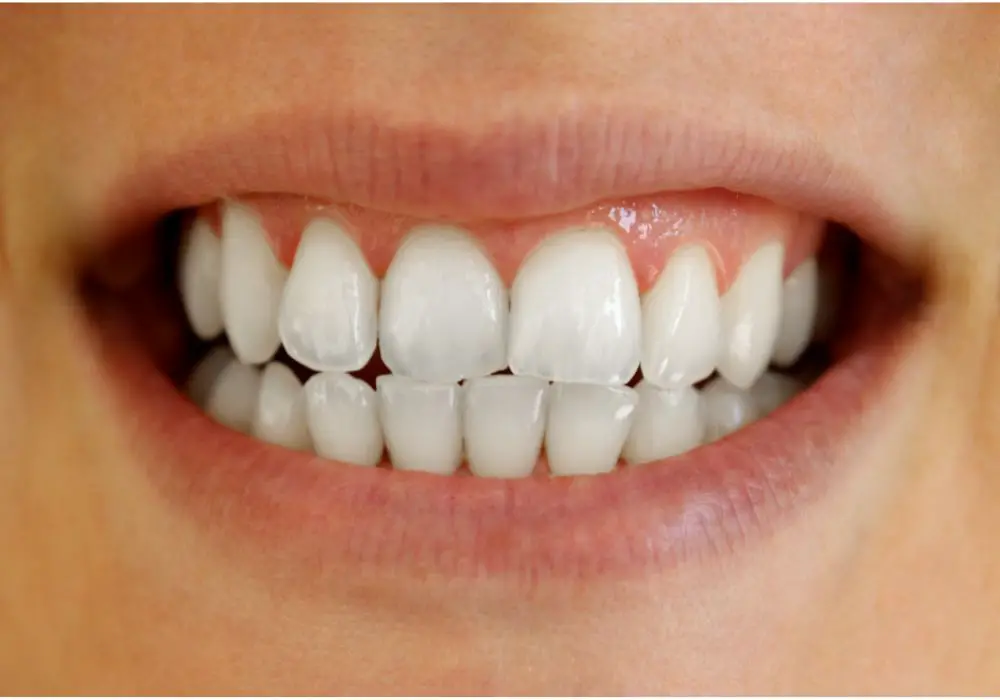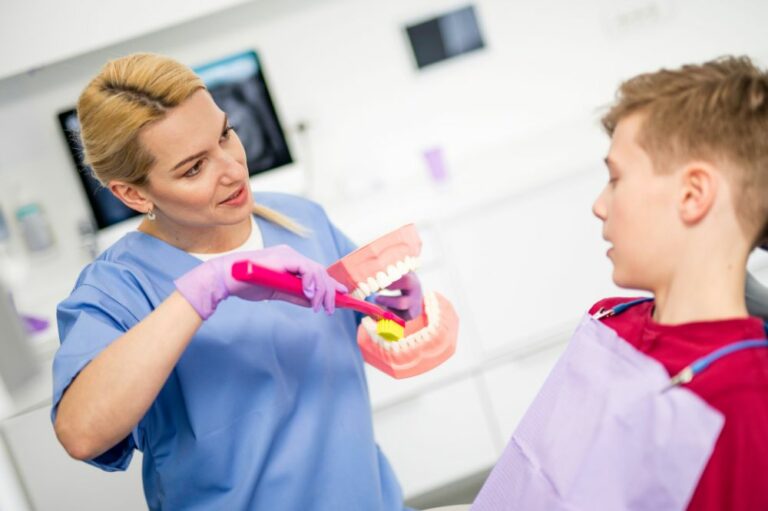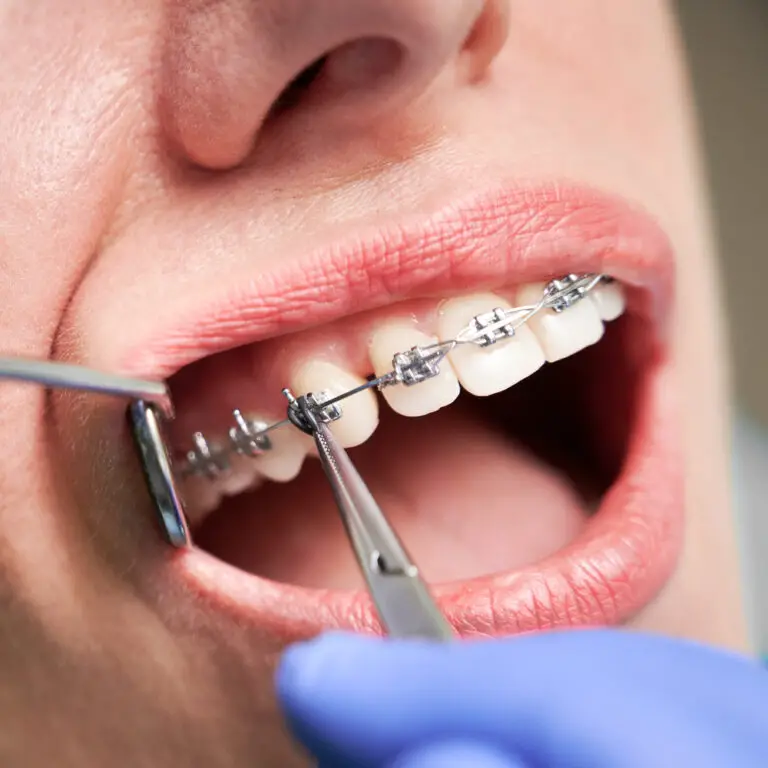Having porous teeth can be concerning. If you’ve noticed your teeth are more yellow, sensitive, or just different than others, you may be wondering what’s causing this and what can be done. This comprehensive guide covers all aspects of porous teeth from causes to treatment.
What Are Porous Teeth?
Porous teeth is a condition where the tooth enamel develops with a defective structure, leading to microscopic pores and holes in the enamel surface. This differs from normal glossy tooth enamel which is dense and smooth.
With porous teeth, the enamel is under mineralized and hypocalcified. That means it lacks sufficient minerals like calcium and phosphate to make the enamel hardy. The many tiny holes and voids make the teeth weaker and more prone to staining and rapid decay.
You may hear porous teeth described as:
- Hypomineralized
- Hypocalcified
- Chalky
- Spotted
- Discolored
- Weak
- Poorly developed
Pits and defects can range from tiny to clearly visible. In milder cases, the pores in the enamel require magnification to see. With more severe porosity, the holes and flaws are obvious to the eye and make the teeth feel rough to the tongue.
The porous defects cause light to scatter rather than reflect off the enamel surface, giving the teeth a dull, opaque appearance. This makes them prone to yellowing and dark stains over time. The defects also make the teeth less able to withstand bite forces and more vulnerable to chipping and breaking.
What Causes Porous Tooth Enamel?
Porous enamel is the result of disturbances during tooth formation in childhood. Enamel begins developing before birth and continues maturing until ages 3-4. If tooth development is disrupted, it affects the enamel structure.
Here are some key factors that influence enamel porosity:
1. Childhood Illnesses
Prolonged illnesses and high fevers in early childhood can interfere with enamel mineralization. The prime time for enamel formation is age 1-4. Illnesses like measles, chickenpox, tonsillitis, asthma, and others during this window can increase risk.
2. Premature Birth
Enamel mineralization begins in the second trimester of pregnancy. Premature babies born earlier miss this key stage of development. This puts them at higher risk for hypomineralized enamel.
3. Malnutrition
Malnutrition deprives the body of vitamins and minerals crucial for enamel maturation like vitamin D, calcium, phosphorus and zinc. Poor nutrition in children age 1-3 is linked to enamel defects.
4. Birth Trauma
Any trauma to a baby’s mouth during delivery can potentially disrupt enamel formation. Forceps delivery is associated with an increased rate of enamel defects in children.
5. Exposure to Toxins
Lead from environmental sources and tetracycline antibiotics are two toxins that can be incorporated into developing enamel and weaken its structure. Children exposed have higher rates of enamel issues.
6. Fluorosis
While fluoride protects teeth, excessive ingestion as a child can cause dental fluorosis. This over-fluoridation during enamel calcification creates pores and weakness. Sources include fluoridated water, swallowing toothpaste, or supplements.
7. Radiation Therapy
Head and neck radiation therapy for childhood cancers may damage developing tooth buds and impair enamel mineralization. This depends on the child’s age and radiation dose.
8. Genetic Conditions
Some genetic conditions affect enamel formation and result in thinner, weaker enamel. These include amelogenesis imperfecta, cystic fibrosis, hypophosphatemia, and hypocalcemia.
9. Acid Erosion
Frequent exposure to acidic foods and drinks can, over time, dissolve and break down the enamel structure. This process is called erosion. Conditions like bulimia and acid reflux accelerate erosion and enamel loss.
Signs and Symptoms of Porous Teeth

How can you identify porous teeth? Here are some of the most common signs and symptoms:
- Chalky or frosted appearance
- Dull, yellow or brownish color
- Spots or streaks of white, yellow, orange or brown
- Higher translucency – more visible dentin shines through thinner enamel
- Small pits, holes, or grooves visible on the enamel surface
- Teeth feel rough or irregular to the tongue
- Porous teeth are often sensitive to hot and cold
- Breaks and fractures more easily with biting or chewing
- Rapid development of cavities and tooth decay
- Existing fillings may deteriorate sooner
The defects in porous enamel that cause these symptoms can occur in a single tooth or groups of teeth. The particular pattern and timing offers clues about the underlying cause.
Defects present immediately at eruption likely stem from prenatal or childhood influences like illness or malnutrition. Defects acquired later are more likely from fluorosis, erosion, or radiation therapy. Your dentist can identify patterns and probable origins based on your specific dental history.
Diagnosing Porous Teeth
If you notice any suspicious spots, discoloration or texture changes in your teeth, promptly consult your dentist. They will examine your teeth closely and also gather information about:
- Childhood medical history – any significant illnesses or conditions?
- Fluoride exposure history – fluoridated water, toothpaste swallowing, supplements?
- Diet and nutrition – any malnutrition or eating disorders?
- Oral hygiene habits – frequent snacking, acidic drinks?
- Family history – any relatives with similar tooth issues?
Your dentist can then determine if porous enamel is the cause of your dental problems. Some diagnostic methods include:
Visual Inspection – Looking closely for white spots, pitting, discoloration and translucency that indicate porous enamel.
Tactile Exam – Feeling for rough areas over the teeth that could represent porous defects.
Radiographs – Dental x-rays allow dentists to see less dense areas of enamel that suggest porosity.
Air Percussion – Teeth with porous enamel conduct temperature changes more readily and are very sensitive to cold air stimulation.
Transillumination – Shining light through the teeth highlights subtle enamel defects.
Photographs – Pictures over time help track changes in porous areas.
Scans – Cone beam CT or intraoral scans may be used for very detailed 3D mapping of enamel thickness and pitting.
How Are Porous Teeth Treated?

While there are no treatments to reverse or rebuild enamel’s defective structure, there are ways to minimize symptoms and prevent further damage to porous teeth:
Remineralization Therapy
Topical fluoride is the most common intervention to strengthen porous enamel. High-concentration fluoride applied by dentists penetrates deeper into enamel pores to mineralize and harden the tissue. Typical treatments include gels, varnishes, foams, and prescription strength mouth rinses. For milder cases, over-the-counter fluoride rinses may suffice coupled with fluoride in toothpaste and drinking water.
Sealants
Pit and fissure sealants can be applied to shield grooves and depressions in back teeth. This provides a protective plastic coating to keep out food debris and prevent decay in vulnerable spots. Sealants last 5-10 years but need monitoring and reapplication.
Resin Infiltration
Flowable composite resins can seep into subsurface pores to create a smoother enamel surface less prone to staining. This is sometimes called resin infiltration or icon resin treatment. It’s typically used for milder white spot lesions on front teeth.
Tooth-Colored Fillings
Restoring early decay with white composite fillings can prevent further loss of porous enamel. Unlike metal fillings, resins bond to the natural tooth for added reinforcement. Smaller fillings hold up better long-term than large restorations.
Crowns
When teeth become very weak, crowns offer a solution. These fully encase the entire tooth with durable ceramic or porcelain. Crowns reinforce teeth, protect from fractures, and correct esthetics. Existing fillings often need replacement first since crowns are more involved.
Esthetic Improvements
While structurally unchanged, outward appearance can be enhanced with professional whitening and veneers. Whitening lightens stains in porous enamel. Veneers mask defects with thin porcelain covers bonded to the front surfaces.
Extra Oral Hygiene
Those with porous teeth must be meticulous with daily brushing, flossing, fluoride use, and dental cleanings every 4-6 months. Limiting sweets and acid intake helps reduce decay risk. Using desensitizing toothpaste eases sensitivity.
With a customized treatment plan and diligent care, patients with porous enamel can enjoy healthy, functional teeth for years. But they do require closer monitoring for decay and fractures. See your dentist promptly for any new symptoms or changes.
Frequently Asked Questions

Can adults develop porous teeth?
No, only the developmental period of youth affects enamel structure. Enamel does not regenerate or remodel after teeth erupt. Damage and wear in adulthood cannot create true porous teeth as seen with developmental defects. However, enamel can become etched and eroded from recurring acid exposure.
Do teeth ever re-mineralize on their own?
Remineralization of enamel is possible but requires the right conditions. Saliva contains calcium and phosphate which can slowly diffuse into enamel over time and strengthen it. Fluoride boosts this process. But for significant improvement in porous enamel, concentrated fluoride therapy applied professionally works best.
Can porcelain veneers correct porous teeth?
Thin porcelain veneers bonded to the front teeth are one aesthetic solution for masking porous enamel. Veneers create a smooth, even tooth appearance. But they cannot restore structure or function. Success depends on the degree of existing enamel loss. Severely compromised teeth may still require crowns for reinforcement.
Is teeth whitening safe with porous enamel?
It’s best to avoid whitening treatments which can exacerbate porosity and make it more noticeable. Peroxide solutions readily seep into porous defects. Consult your dentist first about whitening risks for your specific case. Alternative options like cleaning, polishing, or veneers may be recommended instead.
Are there any new treatments to regenerate enamel?
Regenerating true natural enamel is not yet possible. But there are some emerging experimental treatments to try building a synthetic enamel layer. These include mineralizing gels, micronutrient pastes, and biomimetic scaffolds. More research is underway, but currently these newer options have limited trials only.
Can braces still work if teeth are porous?
Yes, braces can successfully align porous teeth but extra precautions are needed. Good oral hygiene is critical to avoid decalcification and white spot lesions around brackets which are common with porous enamel. Your orthodontist will monitor closely and may suggest additional fluoride use during treatment.
Porosity in enamel poses lifelong challenges for teeth. But being proactive with checkups plus following your dentist’s recommendations offers the best opportunity for healthy smiles. With some extra care, those with porous teeth can keep their teeth strong.






